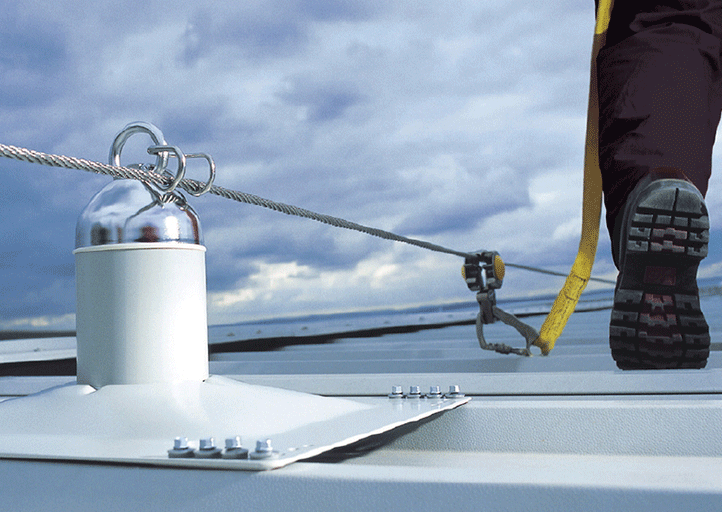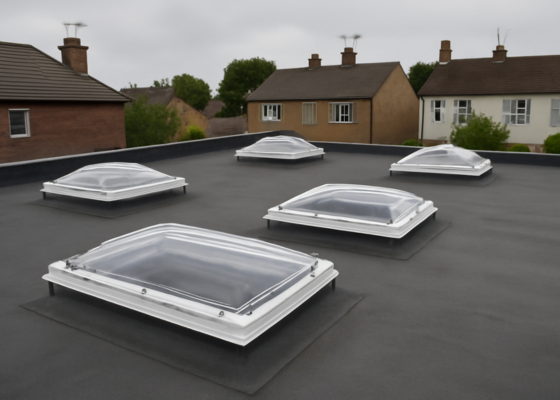“I need a rooftop fall protection solution to keep workers safe on the roof but I don’t want something that can be seen from the ground.“
This is something clients often ask for. Sometimes it’s because the building has historical or architectural significance, or simply because they don’t want something sticking up on their roof. Whatever the reasons, aesthetics can be a concern in fall protection specifications.
Wherever possible, we recommend collective protection like guardrails. These systems are preferred as they don’t need PPE or user participation. Unfortunately, standard guardrails may not always be the best solution, mainly when visual concerns are a consideration.
So, what are the alternatives?
Collapsible guardrails: A flexible solution
Collapsible guardrails are exactly what the name suggests. The guardrail is lifted into place, providing passive fall protection for maintenance, repair or survey work. Once the job is completed, the system easily folds back down, keeping it out of sight.
There are a couple of drawbacks to this solution. If workers forget to raise the guardrail, they won’t be protected, and the manual nature of the system may make it unsuitable for locations requiring frequent access.
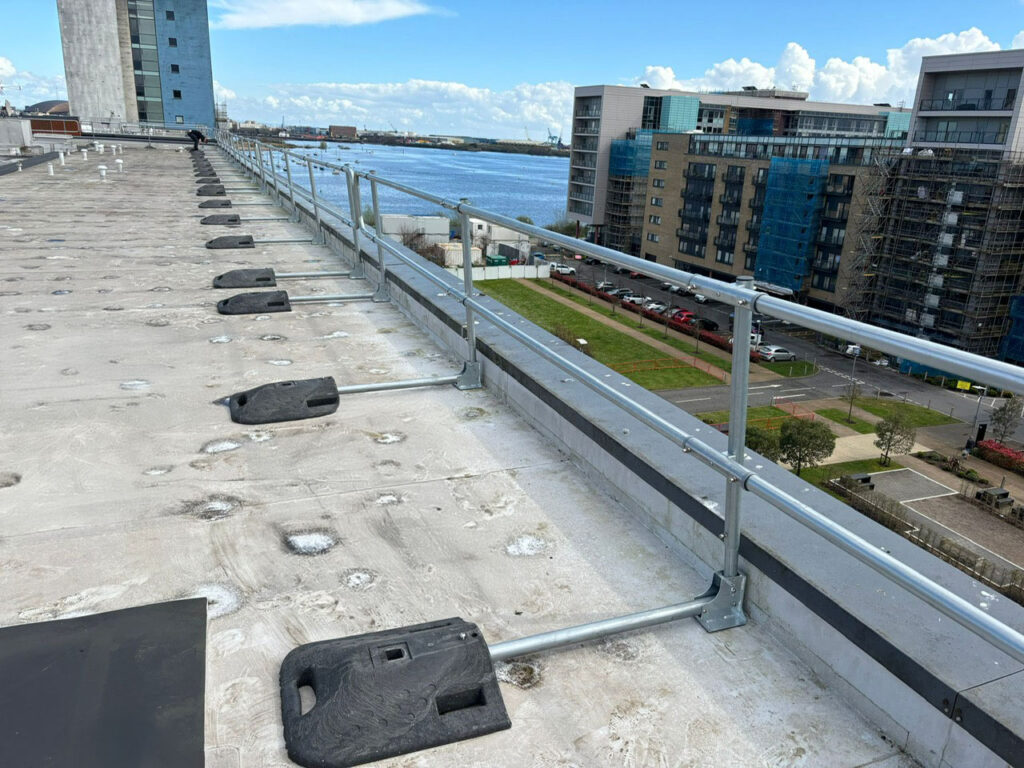
Radiused guardrails: A discreet approach
Radiused or curved guardrails provide permanent protection with minimal visual impact. Unlike standard guardrails, radiused systems gently curve back towards the roof to offer discreet protection.
The slight downside is that the system might still be visible from certain angles, like lower-rise buildings.
Mobile Man Anchors: Temporary fall protection for roofs
Mobile man anchors are portable weighted anchors designed for use with personal protective equipment to provide temporary fall protection. The anchor cannot be seen from ground level, and once work is completed, it can be removed or stowed away from view from adjacent buildings.
While mobile man anchors are suitable for infrequent tasks, workers must wear the appropriate PPE and receive comprehensive training.
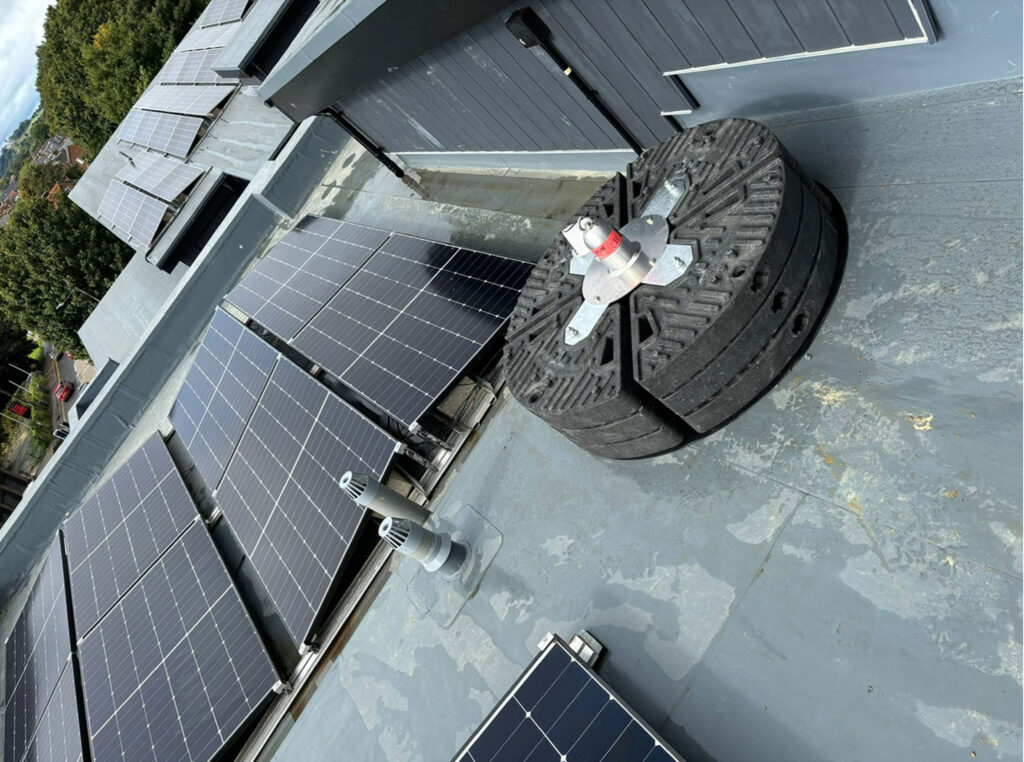
Horizontal lifelines: Unobtrusive rooftop protection
Lifeline systems provide a permanent solution for individual fall protection. Horizontal lifelines consist of cables or rails installed on roofs. Once attached to the system with a harness and lanyard, workers can move freely around the roof.
Lifelines present the most significant risk for rooftop fall protection as they require high levels of training, which is why systems must be a last resort.
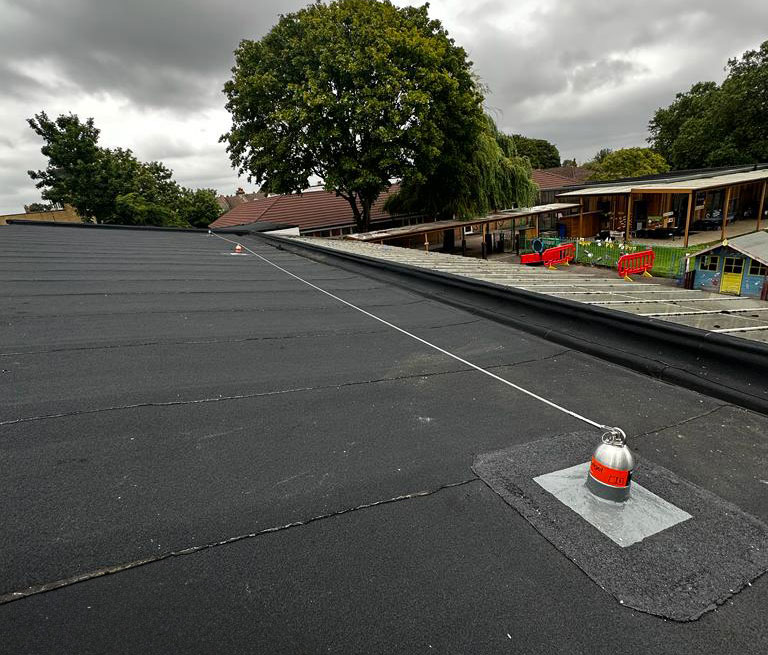
The right balance between aesthetics and fall protection
Choosing rooftop fall protection that doesn’t detract from your building’s aesthetics isn’t simple.
It requires careful consideration and ultimately depends on factors such as access frequency, visibility concerns, and the level of worker training.
For frequent access, radiused guardrails or lifeline systems may be the best choice, while collapsible guardrails and mobile man anchors are more suitable for short-term or occasional work.
At the end of the day, while aesthetics are important, worker safety must always be the priority when selecting your fall protection equipment.

